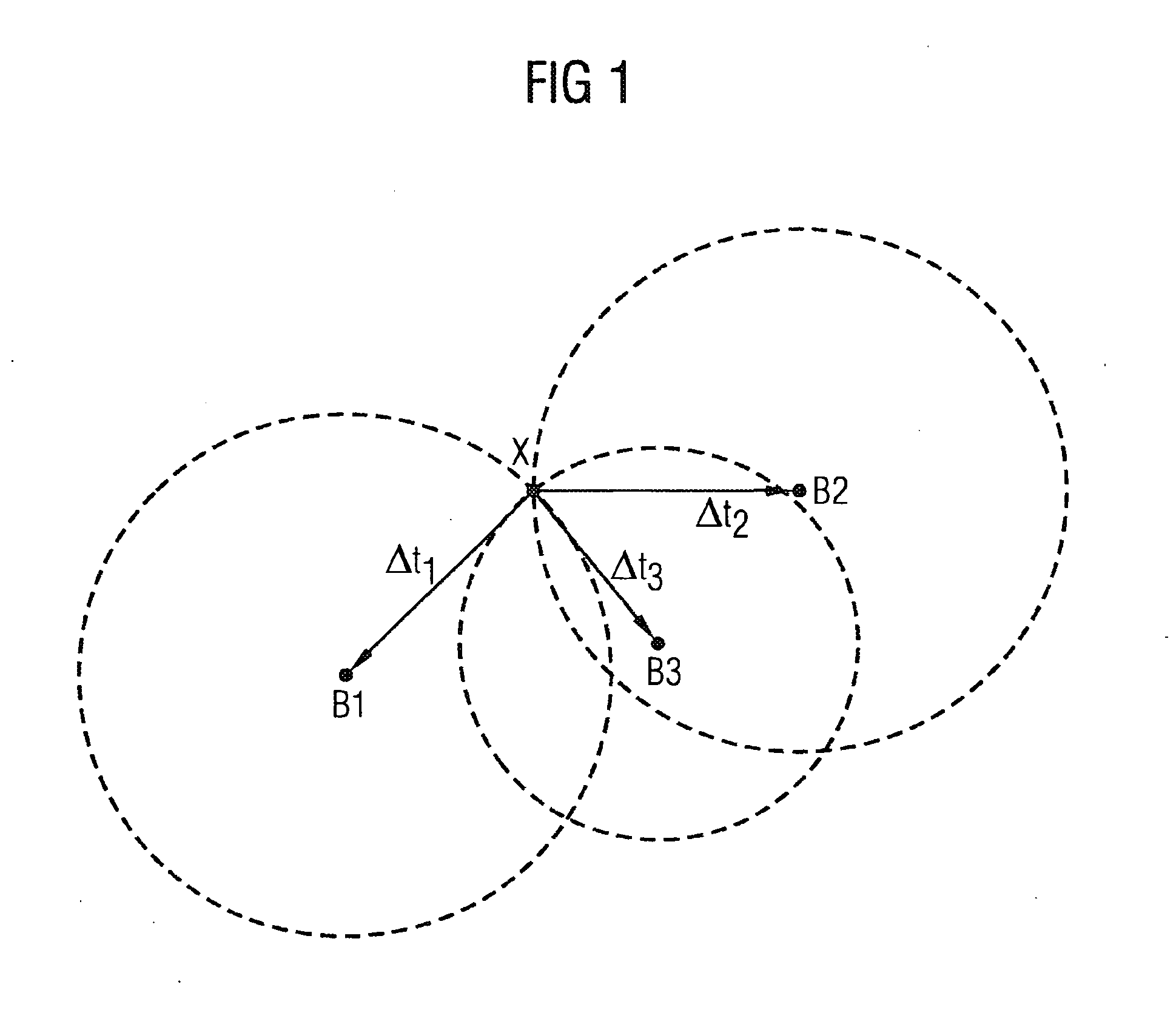Method and device for travel time-based location identification with the aid of a triggered or self-triggering reference signal
- Summary
- Abstract
- Description
- Claims
- Application Information
AI Technical Summary
Benefits of technology
Problems solved by technology
Method used
Image
Examples
Embodiment Construction
[0041]FIG. 1 shows an object X and three fixed stations B1, B2 and B3. The object X transmits a signal which reaches the fixed stations B1, B2 and B3 after the travel times Δt1, Δt2 and Δt3. If all the stations are in the same time axis, i.e. all the stations have the same initial time offset T0, correct time differences are determined which, with the aid of a triangulation, can lead to the identifying of the location of X (formula 1):
Δt12=(T0+Δt2)−(T0+Δt1)=Δt2−Δt1
Δt23=(T0+Δt3)−(T0+Δt2)=Δt3−Δt2
Δt31=(T0+Δt1)−(T0+Δt3)=Δt1−Δt3
[0042]FIG. 2 shows that with unknown different time offsets T1, T2 and T3 are no longer removed from the time differences (formula 2):
Δt12=(T2+Δt2)−(T1+Δt1)
Δt23=(T3+Δt3)−(T2+Δt2)
Δt31=(T1+Δt1)−(T3+Δt3)
[0043]Determining an object's position can only be carried out with inaccuracies. A measured position X′ differs from the actual position X:
[0044]FIG. 3 shows an exemplary embodiment of an arrangement according to the invention. Said arrangement corresponds to that de...
PUM
 Login to View More
Login to View More Abstract
Description
Claims
Application Information
 Login to View More
Login to View More - R&D
- Intellectual Property
- Life Sciences
- Materials
- Tech Scout
- Unparalleled Data Quality
- Higher Quality Content
- 60% Fewer Hallucinations
Browse by: Latest US Patents, China's latest patents, Technical Efficacy Thesaurus, Application Domain, Technology Topic, Popular Technical Reports.
© 2025 PatSnap. All rights reserved.Legal|Privacy policy|Modern Slavery Act Transparency Statement|Sitemap|About US| Contact US: help@patsnap.com



